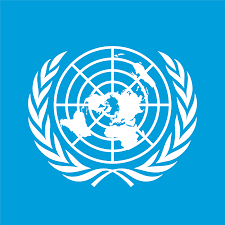
Introduction
In the aftermath of World War II, the global community witnessed the establishment of the first legally binding international agreement under the auspices of the United Nations, specifically targeting human trafficking and the exploitation of prostitution. This essay examines the context, contents, and implications of this groundbreaking convention, marking a pivotal moment in international law and human rights advocacy.
Historical Context
The devastation and displacement caused by World War II brought to light the grim realities of human trafficking and the exploitation of vulnerable populations, particularly women and children. The post-war era, characterized by a strong desire for international cooperation and peace-building, provided an opportune moment for addressing these pressing issues. Recognizing the urgent need to protect individuals from exploitation, the United Nations stepped forward to formulate a comprehensive legal framework.
The Convention’s Framework
The United Nations Convention, focused on the suppression of trafficking in persons and the exploitation of prostitution, was a significant legal instrument. It sought to define and criminalize various forms of human trafficking, including the exploitation of individuals for prostitution. The convention emphasized the need for international collaboration in the fight against these crimes, acknowledging that trafficking was not just a national issue but a global menace that required a unified response.
Key provisions of the convention included the criminalization of trafficking and the exploitation of prostitution, the establishment of measures to prevent such activities, the protection and rehabilitation of victims, and the promotion of cooperation among member states to effectively combat these crimes.
Implications and Impact
The adoption of this convention was a milestone in international law. It provided a legal basis for member states to enact national legislation aligned with the convention’s principles, thereby strengthening the global legal framework against human trafficking and exploitation.
Furthermore, the convention was instrumental in raising global awareness about the issues of human trafficking and prostitution. It paved the way for subsequent international agreements and protocols, deepening the understanding of these complex issues and expanding the scope of protection and support for victims.
Challenges and Continuing Efforts
Despite its groundbreaking nature, the convention faced challenges in implementation. Variations in legal systems, economic conditions, and cultural perceptions among member states posed obstacles to the uniform application of the convention’s principles. Additionally, the convention’s focus on prostitution sparked debates on the legal and moral dimensions of sex work, highlighting the need for a nuanced approach to the issue.
In the years following, the United Nations and various other international organizations have continued to build upon the foundation laid by this convention, refining strategies and introducing new measures to combat human trafficking and support victims.
Conclusion
The United Nations Convention in the post-World War II era was a landmark step in the global fight against human trafficking and the exploitation of prostitution. As the first legally binding international agreement on this subject, it set a precedent for international cooperation and legal action against these heinous crimes. Its legacy lies in its contribution to the evolving discourse and action on human rights and the protection of the vulnerable, reminding the global community of the ongoing imperative to combat exploitation and uphold human dignity.

